The North Staffordshire Hunt has its origins in a number of small, and often short-lived, hunts that used parts of the current hunt country during the C18th and early C19th. These included The Moorlands Hunt [c1816 -1820], The Potteries Harriers [1820 onwards], Mr Lewis Adam’s Harriers, Sir Clifford Constable’s Staghounds, who hunted carted deer around Stafford and Stone and were kennelled at Tixall, and Mr Henry Davenport’s Harriers.
More established hunts included Lord Talbot’s Foxhounds, which hunted the Stafford, Stone and Sandon country from kennels at Ingestre between 1780 and 1783, the Shropshire Hunt which used the western side of the country and the Cheshire Hunt who hunted around Woore and Doddington until they were warned off by Sir John Broughton in 1813.
Mr William Hay’s Hounds [1820-1824] were kennelled near Market Drayton and hunted the western side of the present country with meets at Woore, Sugnall, Seighford, Keele and Loggerheads as well as hunting parts of the present North Shropshire country.
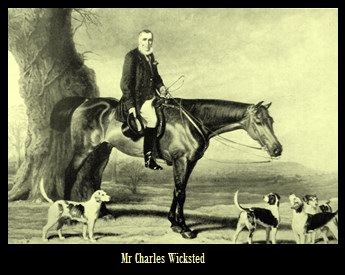 In 1824 Mr Charles Wicksted set up a new hunt at his home at Betley. He put on Will Wells, a veteran with some 36 years service at the Bedfordshire Hunt, as his huntsman. Mr Wicksted hunted 5 days a fortnight in the North Staffs country much as it is today and at the season’s end he regularly took his hounds for bye-days at Shugborough, where Lord Anson, who was master of the Atherstone, already hosted that pack.
In 1824 Mr Charles Wicksted set up a new hunt at his home at Betley. He put on Will Wells, a veteran with some 36 years service at the Bedfordshire Hunt, as his huntsman. Mr Wicksted hunted 5 days a fortnight in the North Staffs country much as it is today and at the season’s end he regularly took his hounds for bye-days at Shugborough, where Lord Anson, who was master of the Atherstone, already hosted that pack.
On 7th April 1829 Mr Wicksted’s Hounds took part in a joint meet with the Cheshire and Shropshire Hunts at Shavington. Each pack brought on 7 couples of hounds which were hunted by Will Head of the Shropshire, with Will Wells and Will Staples of the Cheshire whipping in. The field reputedly numbered some 600 riders including notorious ‘thrusters’ such as Squire ‘Mad Jack’ Mitton and were trailed by an unruly mob of locals on foot enjoying the spectacle.
On Mr Wicksted’s retirement in 1836 the country was taken by Sir Thomas Boughey, but as he was also master of Mr Giffard’s Hounds in the Albrighton country he concentrated more on the south of the area before relinquishing most the country to Mr William Davenport of Longton.
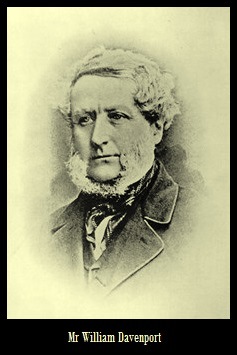
Mr Davenport kept a pack of harriers that he had inherited from his elder brother Henry, who had died in a hunting accident in 1835. He added Mr Adam’s Harriers to these in 1840, and by 1842 had regained all of the former Mr Wicksted’s territory and was hunting fox as well as hare. He purchased foxhounds from Mr Assheton-Smith, Capt Candler, Mr George Foljambe and Sir Massey Stanley and took in drafts from the Quorn, Belvoir, Tedworth and Badsworth.
In 1845 he put on Joe Maiden as huntsman and began hunting foxes full time as ‘The North Staffordshire Hounds’ from kennels on the Burslem side of the old Potteries racecourse at Etruria. Hounds soon moved to Mr Adam’s former kennels at Wall Lane, Wolstanton. Maiden showed tremendous sport and continued as huntsman until his retirement aged 69 in 1863 despite having a leg amputated in 1855!
In 1863 the kennels moved to Trentham by courtesy of the 3rd Duke of Sutherland, who was a great supporter of the hunt. Tom Atkinson became huntsman and in 1866 had the privilege of hunting hounds for the Prince and Princess of Wales when they visited Trentham.
Mr Davenport died in 1869 and the mastership passed to the Earl of Shrewsbury and Capt Trench Nugent who purchased most of the hounds from the Davenport family. Atkinson retired and was replaced by Tom Clarke and Tom Jennings in quick succession. Capt Nugent carried on to 1874, putting on a promising young huntsman called Stephen Dickins.
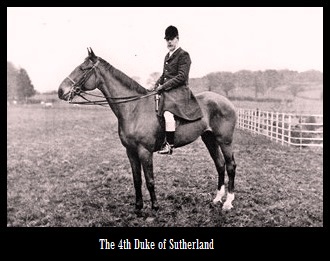
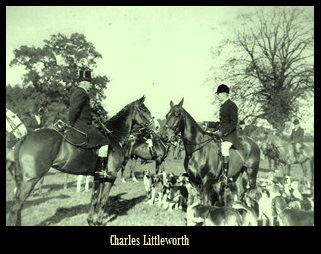
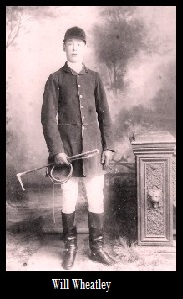 In 1874 the Marquis of Stafford [latterly the 4th Duke of Sutherland] took the mastership and in 1877 he appointed Will Boxall as whipper-in to Dickins – a partnership that would endure until Dickins’ untimely death from pneumonia in 1895. This team showed marvellous sport, not least because all were consummate horsemen who could follow hounds across almost any country. Boxall in particular had successfully ridden racehorses for the Hon Henry Chaplin and had won the Sefton Cup Steeplechase and come second in the 1873 Grand National.
In 1874 the Marquis of Stafford [latterly the 4th Duke of Sutherland] took the mastership and in 1877 he appointed Will Boxall as whipper-in to Dickins – a partnership that would endure until Dickins’ untimely death from pneumonia in 1895. This team showed marvellous sport, not least because all were consummate horsemen who could follow hounds across almost any country. Boxall in particular had successfully ridden racehorses for the Hon Henry Chaplin and had won the Sefton Cup Steeplechase and come second in the 1873 Grand National.
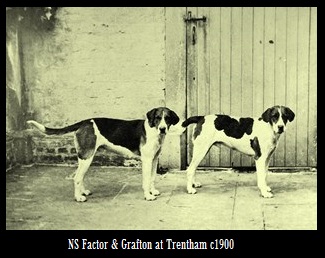
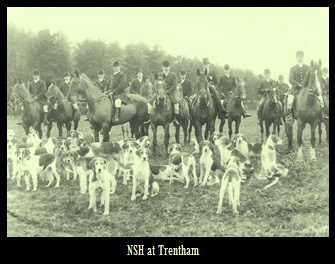 Boxall carried the horn in his own right from 1895-1903 when both he and the Duke retired. The mastership was taken by Col WW Dobson , Mr JW Phillips and The Earl of Huntingdon, who hunted hounds as an amateur, with Will Wheatley as his kennel-huntsman. Col Dobson assumed sole mastership in 1907 with Wheatley hunting hounds, and this partnership endured until Wheatley’s retirement in 1925 – no mean feat considering the Col’s reputation for being somewhat ‘peppery’ to the extent he was affectionately known to his field as “old blast n’bugger’em” . Col Dobson then put on Charles Littleworth as huntsman before handing over the mastership to Mr James Cadman and Capt RF Haggie in 1927.
Boxall carried the horn in his own right from 1895-1903 when both he and the Duke retired. The mastership was taken by Col WW Dobson , Mr JW Phillips and The Earl of Huntingdon, who hunted hounds as an amateur, with Will Wheatley as his kennel-huntsman. Col Dobson assumed sole mastership in 1907 with Wheatley hunting hounds, and this partnership endured until Wheatley’s retirement in 1925 – no mean feat considering the Col’s reputation for being somewhat ‘peppery’ to the extent he was affectionately known to his field as “old blast n’bugger’em” . Col Dobson then put on Charles Littleworth as huntsman before handing over the mastership to Mr James Cadman and Capt RF Haggie in 1927.

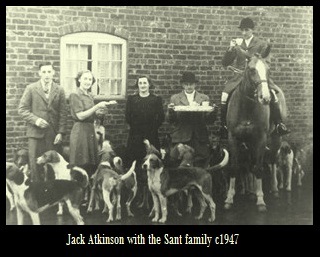 In 1930 Miss Rosamund Harrison of Maer Hall took the mastership. She moved the kennels to their present site at Hill Chorlton and appointed the whipper-in Jack Atkinson as her huntsman - and a golden age began. Atkinson was a superb horseman and a fine huntsman and the 1930s saw wonderful sport. Miss Harrison applied her horse-breeding skills to the hounds and she and Atkinson bred a lovely pack that was successful in the field and ‘on the flags’. Then tragedy struck twice: Miss Harrison died after a long and debilitating illness on 8th Sept 1948 and on 23rd Jan 1949 Atkinson died from a blood clot on his brain following a fall.
In 1930 Miss Rosamund Harrison of Maer Hall took the mastership. She moved the kennels to their present site at Hill Chorlton and appointed the whipper-in Jack Atkinson as her huntsman - and a golden age began. Atkinson was a superb horseman and a fine huntsman and the 1930s saw wonderful sport. Miss Harrison applied her horse-breeding skills to the hounds and she and Atkinson bred a lovely pack that was successful in the field and ‘on the flags’. Then tragedy struck twice: Miss Harrison died after a long and debilitating illness on 8th Sept 1948 and on 23rd Jan 1949 Atkinson died from a blood clot on his brain following a fall.
Mr Ronald Sherwin took over the mastership and put on Herbert Jackson as huntsman. Jackson was an experienced professional who would continue as huntsman or kennel-huntsman until his retirement in 1965. He showed consistently good sport through the successive masterships of Lt Col Tony Dene [1953-55], Brig MW ‘Boy’ Selby Lowndes [1954-58], Miss Judy Ramsden [1958-1960], Mr Jonty Ramsden [1960] Mr J Stanley Bourne [1960 -71] and Mr and Mrs WA Tellwright [1963 -67].
Jackson was followed as huntsman by Geoff Harrison and George Cook, who both went on to have long and successful careers in hunt service. From 1971 -1973 the kennels were shared with the Cheshire Forest hounds and their Masters, Messrs Philip and Peter Hunter also became Masters of the North Staffs. Their huntsman was Bert Maiden, descended from a long family of hunt servants, with whom hunting was always very enjoyable.
Several short masterships followed from Mr Mark Carter [1973-75], Mr James Bostock [1973] and Mr Roger Hewitt [1976-78] with Pat Langrish hunting hounds. Mr J Stanley Bourne returned to the mastership [1978 -87] with his cousin Mr Stanley Furnival [1978-86]. They put on Bob Streather as their huntsman and created a happy team which showed tremendous sport until Streather’s untimely death in 1986. Mr Peter Mitchell [1985 -93] and Mr John Howle [1986-2000] joined the mastership, with Philip Watts hunting hounds from 1986 until 1988 when Mr David Shacklock joined the mastership as amateur huntsman. Long-serving countryman Derek Stockton was put on as his non-riding kennel –huntsman. Miss Gill Pickard and the Hon Mrs Kirkland Tellwright then joined the mastership in 1992 and 1995 respectively.
Ralph Mankee hunted hounds from 1997-2001, followed by Barry Cox [2001-03] and Martin Livy [2003 -2009] who provided much fun as the hunt successfully adjusted to hunting within the law following the 2005 Act.
The current masters are Mrs Ann Hartley, Mr Jonathan Jarrett, and Mr Rick Hampton and the huntsman is Robert Jarrett.


